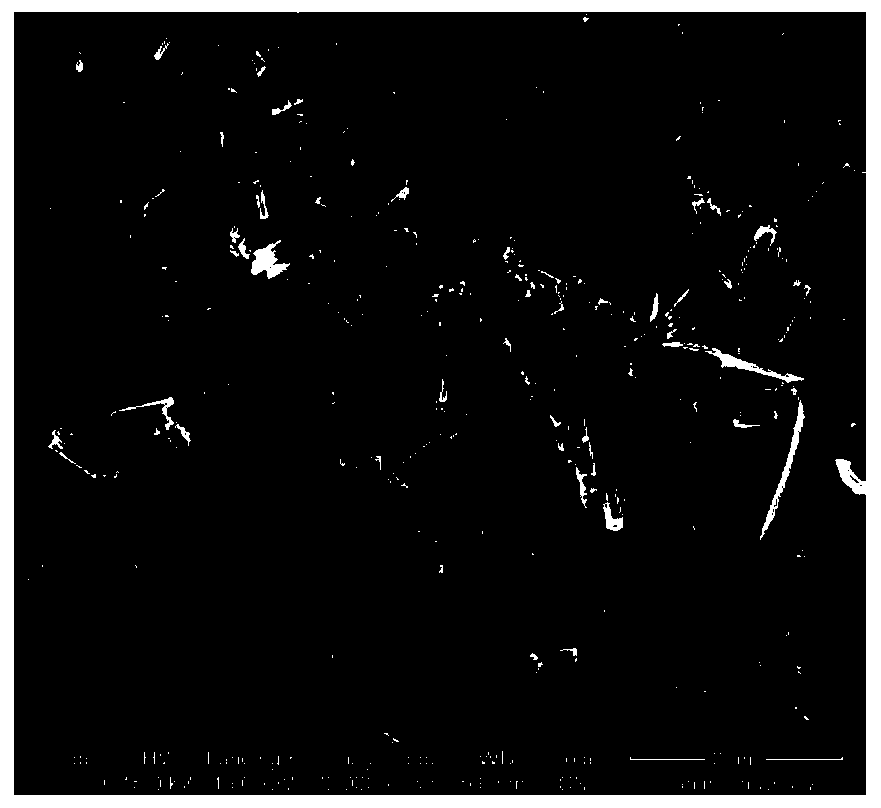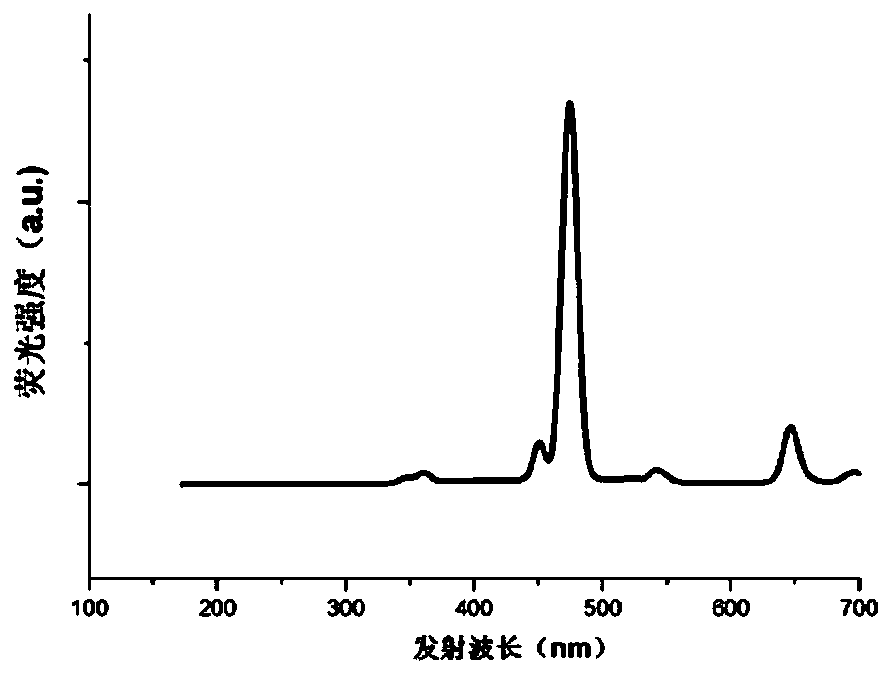Flexible up-conversion blue light sensor capable of regulating cryptochrome CRY2 protein allosterism in vivo and preparation method thereof
A CRY2, cryptochrome technology, applied in the field of biotechnology and materials, can solve the problems of large metabolic burden, high demand, weakened luminous efficiency, etc., and achieve low biological toxicity, high biological safety, and high scientific research application prospects. Effect
- Summary
- Abstract
- Description
- Claims
- Application Information
AI Technical Summary
Problems solved by technology
Method used
Image
Examples
Embodiment 1
[0028] Fabrication of flexible up-conversion blue light sensor
[0029] Lay a layer of polyester film on a glass sheet in advance, configure a 10:1 polydimethylsiloxane precursor, and mix it with a blue light-emitting up-conversion microrod doped with rare earth thulium element 10mg / ml, and pump it under a negative pressure of 0.03MPa. Vacuum for 30 minutes to remove air bubbles, and evenly spin-coat the mixture on the polyester film. After the liquid film is 0.2 mm thick, solidify at a high temperature of 80 °C for 30 minutes. After it cools down, lay a layer of polyester film on the top layer to avoid air bubbles ( figure 1 ).
Embodiment 2
[0031] Fabrication of flexible up-conversion blue light sensor
[0032] Pre-lay a layer of polyester film on a glass sheet, configure a polydimethylsiloxane precursor with a ratio of 9:1, and mix it with blue light-emitting up-conversion microrods doped with rare earth thulium element 10mg / ml, negative pressure 0.03MPa Vacuum for 40 minutes to remove air bubbles, and evenly spin-coat the mixture on the polyester film. After the liquid is formed into a film of 1mm, it is cured at a high temperature of 80°C for 40 minutes. After it is cooled, a layer of polyester film is laid on the top layer to avoid air bubbles.
Embodiment 3
[0034] Fabrication of flexible up-conversion blue light sensor
[0035] Pre-lay a layer of polyester film on a glass sheet, configure a polydimethylsiloxane precursor with a ratio of 7:1, and mix it with a blue light-emitting up-conversion microrod doped with rare earth thulium element 100mg / ml, and a negative pressure of 0.03MPa Vacuum for 40 minutes to remove air bubbles, and evenly spin-coat the mixture on the polyester film. After the liquid is formed into a film of 3mm, it is cured at 80°C for 60 minutes at a high temperature. After it cools down, lay a layer of polyester film on the top layer to avoid air bubbles.
PUM
 Login to View More
Login to View More Abstract
Description
Claims
Application Information
 Login to View More
Login to View More - R&D
- Intellectual Property
- Life Sciences
- Materials
- Tech Scout
- Unparalleled Data Quality
- Higher Quality Content
- 60% Fewer Hallucinations
Browse by: Latest US Patents, China's latest patents, Technical Efficacy Thesaurus, Application Domain, Technology Topic, Popular Technical Reports.
© 2025 PatSnap. All rights reserved.Legal|Privacy policy|Modern Slavery Act Transparency Statement|Sitemap|About US| Contact US: help@patsnap.com



